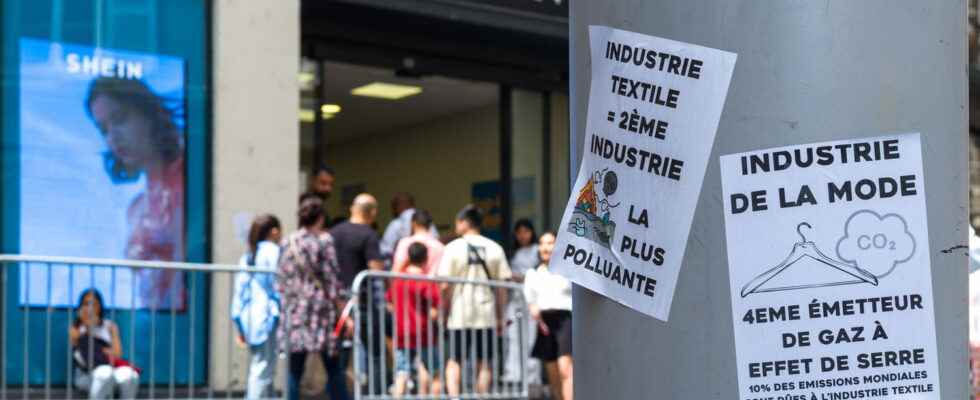The ultra fast fashion brand Shein was the subject of a report in “Capital”, the famous program of the M6 channel, on Sunday November 20, 2022. Production methods, marketing, scandals… Here is what had to be retained.
In the show Capital broadcast on November 20, 2022 on M6, Julien Courbet and his teams decided, a few days before Black Friday, to broadcast a report entitled “Amazon, Shein: investigation into the hidden face of e-commerce giants“. In all, 1h50 devoted to the sometimes controversial practices of these major consumer players. The Chinese brand shein has been the subject of an in-depth investigation, which begins on the sidelines of the Fashion week spring-summer 2023 of Paris during which the web brand organized a parade of young designers in front of an audience of influencers.
The report continues far from the splendor of Paris fashion week, in the living room of a client of the pure-player. We discover Shein’s techniques for attracting consumers to its site and application on a daily basis: in addition to its particularly attractive prices, the brand offers irresistible reductions to those who post photos and comments on the parts they have purchased. When she does not directly offer boxes of clothes to micro influencers in exchange for visibility on their platforms… This is what Stella has been doing for two years. This 18-year-old young woman became an expert in Shein video after being contacted by a member of the brand’s team. Every month she tries dozens of clothes received for free under the watchful eye of her father, strikes a pose in each outfit for a maximum of 5 seconds and broadcasts her videos on her social networks.
But like all pure-players, available online only, Shein comes up against the customer distrust as to the quality of the products. It is for this reason that the brand often organizes pop-up stores in France, where consumers can try on the brand’s latest creations IRL. Enough to convert potential new aficionados, who nevertheless leave the store empty-handed since on the spot, nothing can be bought. An unstoppable technique to limit stocks, staff and the time spent in the shop, and thus guarantee low product prices. In the end, to afford the coveted pieces, you have to go to the Shein site and place an order, thus becoming captive to the brand’s marketing actions.
How are the Shein brand collections produced?
The Capital report then flies to the region of Cantona Chinese city where most of the production workshops of the brand. Over there, a fashion designer interviewed announces that he produces 50 pants per day and earn 1,400 euros per month working for the brand’s suppliers. A salary achieved by the sweat of his brow, since to get there, he works 7 days on 7, from 9 a.m. to 12 a.m. without even taking a lunch break. It must be said that with 208,000 items presented daily on the Shein site, the brand needs to ensure a sustained production rate, made possible by the brand’s 6,000 or so suppliers, whose work is monitored live by the fast fashion company thanks to tracking software.
To satisfy its customers’ desire for novelties, Shein is always looking for new designs and carefully observes the major trends on social networks. And the creations of small independent labels, such as HouseCléo, the label founded by Marie Dewet and her mother in 2015. Based in Lille, the seamstresses of the brand almost choked when they saw their delicate blouses copied almost identically, the know-how and the pretty materials less, by Shein. Sold 200 euro by MaisonCléo, these pieces were distributed to just over 11 euros by the Chinese brand. And it’s not once, but five times, that Marie Dewet’s designs have been imitated by the ultra fast fashion giant.
For the designer, legal action is unthinkable because it is far too expensive. Small consolation: these imitations, like many of the Shein-stamped pieces, are of poor quality, some clothes even losing a size in a few washes. A quick-to-wear fashion which, in addition to encouraging hyper-consumption, leads to environmental problems in terms of recycling clothes. As it is impossible to give them a second life, these clothes increase the pile of incinerated waste and thus fall into the category of ready-to-throw clothes… So to find out more about Shein, go to M6 Replay to watch “Amazon, Shein: investigation into the hidden face of e-commerce giants“.
